|
Life is in the Blood
Humans can't live without blood. Without blood, the body's
organs couldn't get the oxygen and nutrients they need
to survive, we couldn't keep warm or cool off, fight infections,
or get rid of our own waste products. Without enough blood,
we'd weaken and die
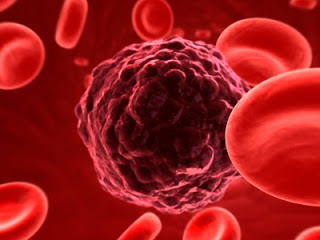
1.Arteries carry oxygenated blood (blood that has received
oxygen from the lungs) from the heart to the rest of the
body.
2.Blood then travels through veins back to the heart and
lungs, where it receives more oxygen.
As the heart beats, you can feel blood traveling through
the body at pulse points — like the neck and the
wrist — where large, blood-filled arteries run close
to the surface of the skin.
The blood that flows through this network of veins and
arteries is whole blood, which contains three types of
blood cells:
1.red blood cells (RBCs)
2.white blood cells (WBCs)
3.platelets
Blood is essential for good health because the body depends
on a steady supply of fuel and oxygen to reach its billions
of cells. Even the heart couldn't survive without blood
flowing through the vessels that bring nourishment to its
muscular walls.
Blood also carries carbon dioxide and other waste materials
to the lungs, kidneys, and digestive system to be removed
from the body.
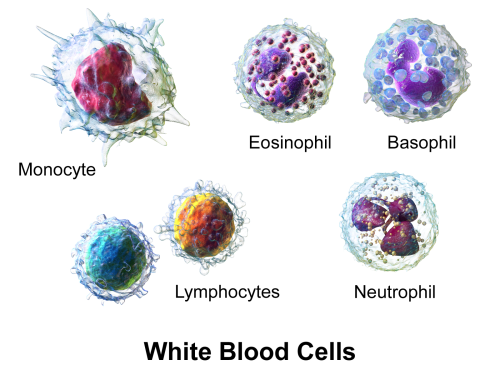
The blood is one of the most important substances in the
body. The blood sustains the vital activities and it nourishes
the body. Therefore, it keeps the function of the tissues,
organs and circulation pathway in good order.
The condition of the blood will determine the function
and the condition of the organs. The heart, the spleen,
the lungs, the liver, the skin, the muscles, all depends
on the blood. Poor circulation will hinder the function
of the organs and the health of the organs.
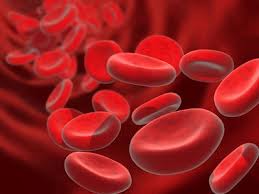
Now there is scientific proof that "dirty, sticky
blood" is the main reason for severe clotting of our
blood and we now know for sure, it is this clotting of
our blood that can lead to heart attacks and strokes.
It was reported to the world fifteen years ago that it
was "dirty blood" in the arteries that was the
main reason for more heart attacks, strokes, high blood
sugar and poor circulation.
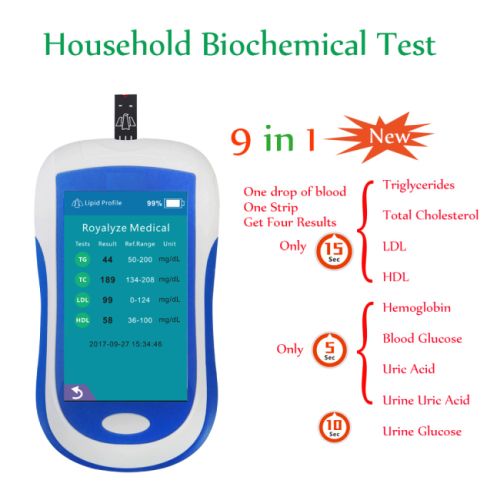
Lets look at some of the silent killers that build up
in our blood.

Triglycerides
"Do you have high triglyceride levels? If you do, you're
hardly alone. Overall, more than a third of adults in the
U.S. have high triglyceride levels, a type of fat in the
blood. Would you like to measuse your Triglycerides ?
Although it's a common problem, many of us don't know
the first thing about high triglycerides. Studies
have consistently linked high triglycerides levels with
heart
disease, heart attacks, and stroke, especially in people
with low levels of "good" HDL cholesterol and
in those with type 2 diabetes."
Know Your Triglyceride Numbers
Here are the levels, based on a fasting blood test.
Normal: Less than 150 mg/dL
Borderline: 150 to 199 mg/dL
High: 200 to 499 mg/dL
Very High: 500 mg/dL or above"
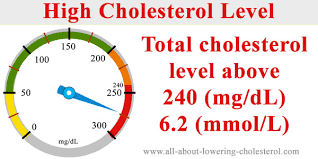
Total Cholesterol
Total cholesterol is the total amount of cholesterol in
your blood. Your total cholesterol includes low-density
lipoprotein (LDL, or “bad”) cholesterol and
high-density lipoprotein (HDL, or “good”) cholesterol.
Cholesterol is a waxy, fat-like substance found in every
cell in your body.
Why You Should Test cholesterol
levels
Keeping total cholesterol levels within a healthy range
is important for people of all ages, whether they have
heart disease or not. If like many people, you have high
blood cholesterol and don’t know it, the only way
you can find out is by having your blood tested. Why? Because,
by itself, high blood cholesterol doesn’t cause symptoms.
That’s why, if you’re age 20 years or older,
you should have your cholesterol tested.Your total cholesterol
level reflects your risk for heart disease. In general,
the higher the level, the higher your risk.
Test results for total cholesterol
Desirable
level: Less than 200 mg/dL
Borderline high level: 200-239 mg/dL
High level: 240 mg/dL and above
LDL Cholesterol
"LDL
(“bad”) cholesterol is the main “engine” of
cholesterol buildup and blockage in your arteries."
How can a high LDL level raise my risk of coronary artery
disease and other diseases?
If you have a high LDL level, this means that you have
too much LDL cholesterol in your blood. This extra LDL,
along with other substances, forms plaque. The plaque builds
up in your arteries; this is a condition called atherosclerosis.
Coronary artery disease happens when the plaque buildup
is in the arteries of your heart. It causes the arteries
to become hardened and narrowed, which slows down or blocks
the blood flow to your heart. Since your blood carries
oxygen to your heart, this means that your heart may not
be able to get enough oxygen. This can cause angina (chest
pain), or if the blood flow is completely blocked, a heart
attack.
HDL Cholesterol
"HDL (“good”) cholesterol helps prevent
heart disease by removing cholesterol from your arteries
and
sending it to your liver for elimination."
HDL cholesterol is the well-behaved "good cholesterol." This
friendly scavenger cruises the bloodstream. As it does,
it removes harmful bad cholesterol from where it doesn't
belong. High HDL levels reduce the risk for heart disease
-- but low levels increase the risk.
Hemaglobin
Hemoglobin (Hb) is the protein contained in red blood
cells that is responsible for delivery of oxygen to the
tissues. To ensure adequate tissue oxygenation, a sufficient
hemoglobin level must be maintained.
If your hemoglobin level is lower than normal, you have
anemia. There are many forms of anemia, each with different
causes, which can include:
Iron deficiency
Vitamin B-12 deficiency
Folate deficiency
Bleeding
Cancers that affect the bone marrow, such as leukemia
Kidney disease
Liver disease
Hypothyroidism
Thalassemia — a genetic disorder that causes low levels of hemoglobin
and red blood cells
Blood Glucose
Why measure blood glucose?
It can be used as a screening tool for diabetes mellitus
(diabetes).
It is an important tool in the assessment of the unwell patient, especially
in the young or old.
Potentially life-threatening extremes of blood glucose can be detected to enable
the patient, carer or health worker to respond to high (hyperglycaemia) and
low (hypoglycaemia) blood glucose by adjusting the diet or using insulin.
Monitoring your blood sugar level also shows you how your
blood sugar level is affected by diet, therapeutic measures
(insulin, medication), sport, travel and illness and lets
you take corrective actions immediately. You should speak
to your doctor about the details of monitoring blood sugar
levels
Uric Acid
"The uric acid blood test is used to detect high
levels of this compound in the blood in order to help diagnose gout.
The test is also used to monitor
uric acid levels in people undergoing chemotherapy or radiation treatment
for cancer. Rapid cell turnover from such treatment can result in an increased
uric acid level. "
"High uric acid levels in your blood can also indicate of a variety of conditions,
including:
diabetes
gout, which involves recurring attacks of acute arthritis
chemotherapy
bone marrow disorders, such as leukemia
a diet high in purines
hypoparathyroidism, which is a decrease in your parathyroid function
kidney disorders, such as acute kidney failure
kidney stones
multiple myeloma, which is cancer of the plasma cells in your bone marrow
metastasized cancer, which is cancer that has spread from its original site"
Urine Uric acid
The uric acid urine test measures the amount of uric acid in a sample of
urine collected over 24 hours. ... And if your kidneys aren't working the
way they should, the level of uric acid in the urine can get too low. High
levels of uric acid can cause crystals to form in joints.
According to the Mayo Clinic, common symptoms are:
Intense joint pain that is most severe in the first 12 to 24 hours.
Joint pain that lasts a few days to a few weeks and spreads to more joints
over time.
Redness, tenderness and swelling of the joints.
Urine Glucose
What is a urine glucose test? A urine glucose test is a quick and simple
way to check for abnormally high levels of glucose in your urine.
"Urinary tract infections and genital or vaginal itching are also common
in women who have diabetes, and can be caused by the presence of excess glucose
in the urine. An opportunistic infection, such as Candida or “Yeast” overgrowth,
often occurs when the warm moist vaginal environment meets with excess glucose
in the urine, and is often exacerbated by use of antibiotics which destroy
the delicate balance of bacteria in the intestinal system." Best
to monitor Urine Glucose
Introducing the latest Houshold Biochemical Tester

VERY EASY TO USE
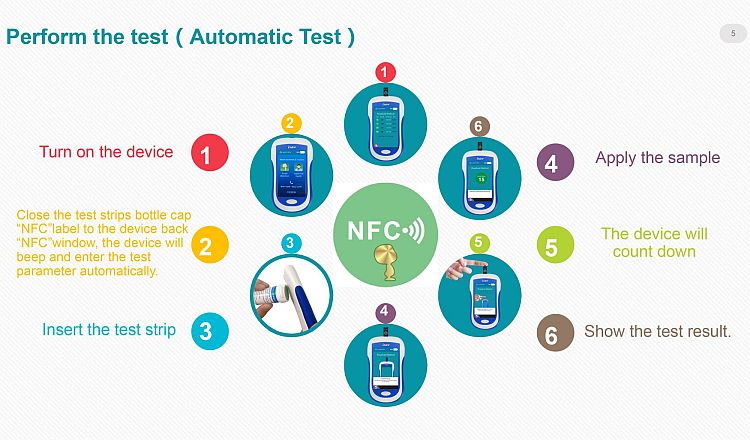
| Test Parameter |
Measure Range |
Reference Range |
Test Time |
Sample Volume |
| Triglycerides |
69~1062 mg/dL or 0.78~12 mmol/L |
50~151 mg/dL or 0.57~1.70 mmol/L |
15 Seconds |
3µL |
| Total Cholestero |
100~400 mg/dL or 2.5~10 mmol/L |
2.5~10 mmol/L 134~208 mg/dL or 3.35~5.2 mmol/L |
15 Seconds |
3µL |
| LDL |
62~260 mg/dL or 1.56~6.50 mmol/L |
1.56~6.50 mmol/L 0~124 mg/dL or 0~3.10 mmol/L |
15 Seconds |
3µL |
| HDL |
37~100 mg/dL or 0.92~2.5 mmol/L |
28~80 mg/dL or 0.70~2.00 mmol/L |
15 Seconds |
3µL |
| Urine Glucose |
1~1800 mg/dL or 0.01~99.98 |
0~100 mg/dL or 0~5.55 mmol/L |
10 Seconds |
1.5µL |
| Blood Uric Acid |
1.5~20 mg/dL or 90~1200 mmol/L |
2~7 mg/dL or 120~420 mmol/L |
5 Seconds |
1.5µL |
| Blood Glucose |
20~600 mg/dL or 1.1~33.3 mmol/L |
70~110 mg/dL or 3.90~6.10 mmol/L |
5 Seconds |
1.5µL |
| Urine Uric Acid |
8~202 mg/dL or 0.5~12 mmol/L |
37~92 mg/dL or 2.2~5.48 mmol/L |
5 Seconds |
1.5µL |
| Hemoglobin |
5.0~27.0 g/dL |
12.0~16.0 g/dL |
5 Seconds |
1.5µL |
Model Number ASM-02
Connected WIFI, bluetooth, NFC, GPRS, fit all kinds of networks,
Transfer USB data transfer or bluetooth transfer
Power Supply 3.7V (built-in polymer lithium battery)
Working environment Humidity: 10-90%
Temperature: 10-40?
Sample Capillary whole blood or venous whole blood, Human Urine
Memory 4G Data storage function
Coding NFC identification or code by hand
Unit of measure mmol/L, mg/dL, µmol/L
Average calculation over 7 days, 14 days and 28 days results average
LCD Size 85*5mm
Dimension 143*80*16mm
Battery life more than 15 days
Weight 154g
Automatic power off Press the power button for 3 seconds to turn on or
off the meter
 |
Household Biochemical Tester
includes 1 meter,
1 carry case,
1 user manual,
1 lancet
device,
40 pcs lancets
and 10 strips
of each.
|
|

